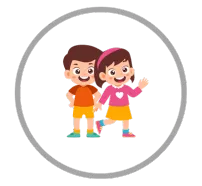Myopia
Understanding Myopia
FSDAVCFEBFEVSDDVFSD
FSDAVCFEBFEVSDDVFSD
FSDAVCFEBFEVSDDVFSD
Myopia, The Unseen Epidemic
In today’s digital world, myopia commonly known as nearsightedness is becoming an increasingly widespread issue. Once thought to be purely genetic, this condition now affects people of all ages, particularly children, due to modern lifestyle changes. The rise in screen use, decreased outdoor activity, and extended near-work tasks have significantly contributed to the rapid increase in myopia cases.

In today’s digital world, myopia commonly known as nearsightedness is becoming an increasingly widespread issue. Once thought to be purely genetic, this condition now affects people of all ages, particularly children, due to modern lifestyle changes. The rise in screen use, decreased outdoor activity, and extended near-work tasks have significantly contributed to the rapid increase in myopia cases.

Over the past few decades, health professionals have recognized myopia as a global public health concern. The growing number of individuals affected is not just about needing corrective eyewear; it signals a larger issue linked to long-term eye health. Understanding the factors behind myopia and addressing them early is crucial in protecting vision and preventing more severe complications in the future.
What It Is and Why It Matters?
Myopia is a vision condition that makes distant objects appear blurry while nearby objects remain clear. This occurs when the shape of the eye causes light to focus in front of the retina rather than directly on it. The condition typically develops in childhood and can progress if not properly managed.
The increasing prevalence of myopia is closely linked to modern habits. Children and adults alike spend more time on digital devices, engaging in prolonged screen use and near-focused tasks. Coupled with less time spent outdoors, these lifestyle changes contribute to the rapid rise in myopia cases. As this trend continues, the importance of early detection and proactive management becomes even more significant in reducing long-term risks.
Why Is Myopia So Common Today?
The surge in myopia cases is largely due to shifts in how people interact with their environment. The widespread use of screens, whether for work, education, or entertainment, keeps the eyes engaged in near-focused tasks for extended periods. This strain on the eyes can accelerate the onset and progression of myopia, especially in children whose vision is still developing.
Urbanization also plays a role, as children in cities often have limited exposure to natural light and outdoor activities. Research suggests that spending more time outdoors can slow myopia progression by helping regulate eye growth. With modern education and work demanding more screen time, these environmental factors have collectively contributed to the global rise in myopia, making effective management strategies more essential than ever.
The Implications of Untreated Myopia

When myopia is left unaddressed, it can lead to serious complications beyond blurred vision. High levels of myopia increase the risk of developing conditions such as retinal detachment, cataracts, glaucoma, and macular degeneration. These issues arise because extreme elongation of the eyeball, a characteristic of progressive myopia, places excessive stress on the retina and other structures within the eye.
For children, the rapid progression of myopia poses a greater risk since their eyes are still developing. Without early intervention, their vision may continue to worsen, leading to a higher likelihood of severe eye problems in adulthood. Regular eye exams are essential in monitoring myopia progression and taking appropriate measures to prevent further deterioration.
Correcting Myopia: Solutions and Technologies
Myopia is a manageable condition with various corrective options available. Eyeglasses and contact lenses remain the most common solutions, providing clear vision by compensating for the refractive error. These options are widely accessible and can be tailored to individual needs.
More advanced treatments have also emerged, offering alternative ways to manage myopia progression. Orthokeratology (Ortho-K) lenses, worn overnight, temporarily reshape the cornea, allowing for clear vision during the day without glasses or contact lenses. Refractive surgery, such as LASIK, provides a long-term solution by reshaping the cornea to correct myopia. However, these surgical options are generally recommended for adults with stable prescriptions.
Choosing the right myopia management approach depends on factors such as age, lifestyle, and the severity of the condition. Regular eye care consultations help determine the most effective treatment plan to maintain healthy vision.
Is It Too Late to Fix Myopia?
While early intervention is ideal, it is never too late to address myopia. Children and teenagers benefit most from early detection, as lifestyle adjustments and specialized lenses can help slow progression. Reducing screen time, incorporating more outdoor activities, and following eye care recommendations can make a significant difference in managing myopia.
For adults, while myopia progression typically stabilizes, proper corrective measures remain important for maintaining clear vision. Advanced lens technologies, such as progressive and bifocal lenses, provide added comfort for those needing near and distance correction. Regular eye exams are key to ensuring prescriptions stay up to date and that potential complications are caught early.
The Future of Myopia Care
Advancements in eye care continue to shape the future of myopia management . Innovative lens technologies, such as smart lenses that adapt to different lighting conditions, are being developed to enhance visual comfort. Additionally, genetic research is deepening our understanding of myopia, paving the way for targeted prevention and treatment strategies.
As awareness of myopia grows, early intervention and personalized eye care will play a greater role in vision health. Emphasizing routine eye exams and staying informed about new treatment options will be essential in reducing the long-term impact of myopia.

Contact Info
Hours of Operation
Mon - Fri | 9:00 AM - 5:00 PM
Sat - Sun | Closed
Holiday Hours: We are closed for the following holidays: New Years Day, Memorial Day, Independence Day, Labor Day, Thanksgiving Day, Christmas Day
© 2025 Kleinwood Vision. All rights Reserved.


